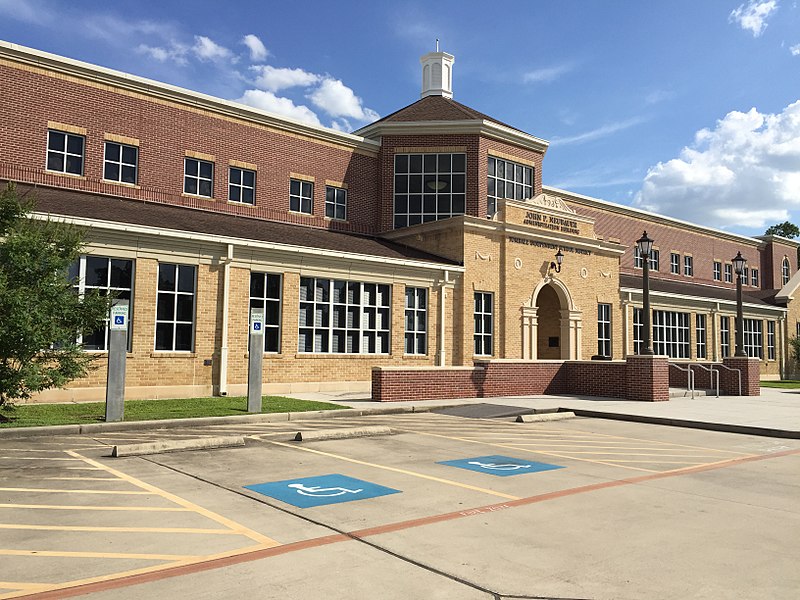The City of TomballTexas

Tomball (/ ˈtɒmbɔːl/ TOM-bawl) is a city in Harris County in the U.S. state of Texas, a part of the Houston metropolitan area. The population was 10,753 at the 2010 census. In 1907, the neighborhood of Peck was renamed Tomball for regional congressman Thomas Henry Ball, who had a major role in the development of the Port of Houston.
Tomball Data
| Coordinates: 30°5′56″N 95°37′8″WCoordinates: 30°5′56″N 95°37′8″W | |
| Country | |
|---|---|
| State | |
| Counties | Harris |
| City Established | December 2, 1907 |
| Government | |
| • Type | Council-Manager |
| • Mayor | Gretchen Fagan |
| • City Manager | Martin Mixter |
| Area | |
| • Total | 11.9 sq mi (30.9 km2) |
| • Land | 11.8 sq mi (30.5 km2) |
| • Water | 0.2 sq mi (0.5 km2) |
| Elevation | 187 ft (57 m) |
| Population
(2010)
|
|
| • Total | 10,753 |
| Time zone | UTC-6 (Central (CST)) |
| • Summer (DST) | UTC-5 (CDT) |
| ZIP codes |
77375, 77377
|
| Area code(s) | 281, 713, 832 |
| FIPS code | 48-73316 |
| GNIS feature ID | 1348633 |
| Website | www |
History
Settlement started in the Tomball area in the early 19th century, where settlers discovered an open, fertile land that got appropriate rainfall– best conditions for farming and raising livestock. It was on a land approved in 1838 to William Hurd’s successors. In 1906 the area began to expand. Railway line engineers frequently observed that the Tomball area was on the boundary in between the low hills of Texas and the flat coastal plains of the Gulf, making it a perfect location for a train stop. The railway could pack more cargo on each car, due to the fact that the topography gently sloped toward the Galveston ports and provided an easier downhill coast. Thomas Henry Ball, an attorney for the Trinity and Brazos Valley Railroad, encouraged the railroad to run the line right through downtown Tomball. Right after, people came in droves to this new train stop. Hotels, boarding homes, saloons, and mercantile shops all started to spring up in the area. At first, people called the area Peck, after a primary civil engineer of the railroad line. On December 2, 1907, the town was officially called Tom Ball, later on to be reduced to one word, for Mr. Ball.
While the boom of the railroad lasted less than a decade, the oil and gas industry started to leave its mark on the area. Oil probe instruments typically showed that oil was simply underneath Tomball, particularly after the Spindletop gusher in Beaumont. Early exploration came up dry, the town remained a craze of activity for those who dreamed of oil. Undaunted by the obstacles, the persevering spirit of Tomball’s citizens proved fulfilling when a drill struck a 100-foot (30 m) gusher of oil on May 27, 1933. Tomball, which individuals started to call “a floating island of oil”, was immediately flooded with over two dozen oil business, which drew thousands of workers and improved the economy like never ever previously. One major gamer, the Humble Oil Company, struck a handle the town through which they would supply gas free of charge to the residents in exchange for rights to drill on the land. This contract lasted up until 1988, when the reservoirs began to be diminished.
Tomball included in 1933. Since of the 1933 incorporation, Houston did not integrate Tomball’s territory into its city limitations.
In Tomball, individuals could escape some of the disagreeable qualities of the city, like high taxes, traffic, and crime, however still delight in the nearness of tasks, culture, and home entertainment. In the 1970s, Tomball’s population again skyrocketed. Over the next 20 years, Tomball’s population would increase from 16,000 individuals in the school district area to over 85,000 residents.
Government and infrastructure
Harris County operates a tax office at 101 South Walnut Street in Tomball.
The North Harris County Regional Water Authority form by State legislation as a taxing entity, which is located in Voting District No. 2. The Texas House of Representatives bill that produced the water authority, HB 2965, was signed into law on June 18, 1999. On January 15, 2000 citizens voted to verify the development of the authority in a special election. It taxes the cities water clients, nevertheless it does not provide water services to Tomball, Tomball has its own water supply. Changed the part about the NHCRWA providing Tomball water service, Derek Townsend, Tomball City Council Person Position 4, 12/4/18.
Harris County Housing Authority (HCHA) operates The Retreat at Westlock, a public housing complex for elders, in an unincorporated area away from the Tomball city limitations, along Texas State Highway 249. Prior to the development of the complex, residents of area subdivisions revealed opposition to the addition of low income real estate in their locations. The HCHA set a ban on visitors under age 62 from being present at The Retreat at Westlock for durations longer than three days each, due to the opposition from the surrounding areas; it is, as of 2017, the only HCHA property with this guideline. Tomball government employment.
Transportation
The city of Tomball is primarily served by FM 2920 (Main Street) east to west and State Highway 249 (Tomball Parkway) north to south.
On June 27, 2007, the Texas State Legislature approved Tomball’s request to annex Hooks Airport even though the airport does not border the Tomball city limits. Since the airport is in the city of Houston’s extraterritorial jurisdiction, the city of Tomball had to get permission from Houston to annex the airport.
Health care
The city is served by Tomball Regional Medical Center, located at 605 Holderrieth Boulevard. It is a full-service 357-bed facility healthcare facility offering unique knowledge in heart disease, cancer care, emergency services, digital diagnostic imaging, physical rehabilitation, sports medication, and comprehensive wound and lymphedema care. Tomball Regional Medical Care is owned by HCA Healthcare Inc . Tomball Parks and Recreation.
Tomball, TX Zip Code
77375 77377

